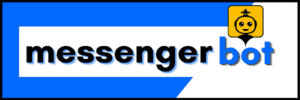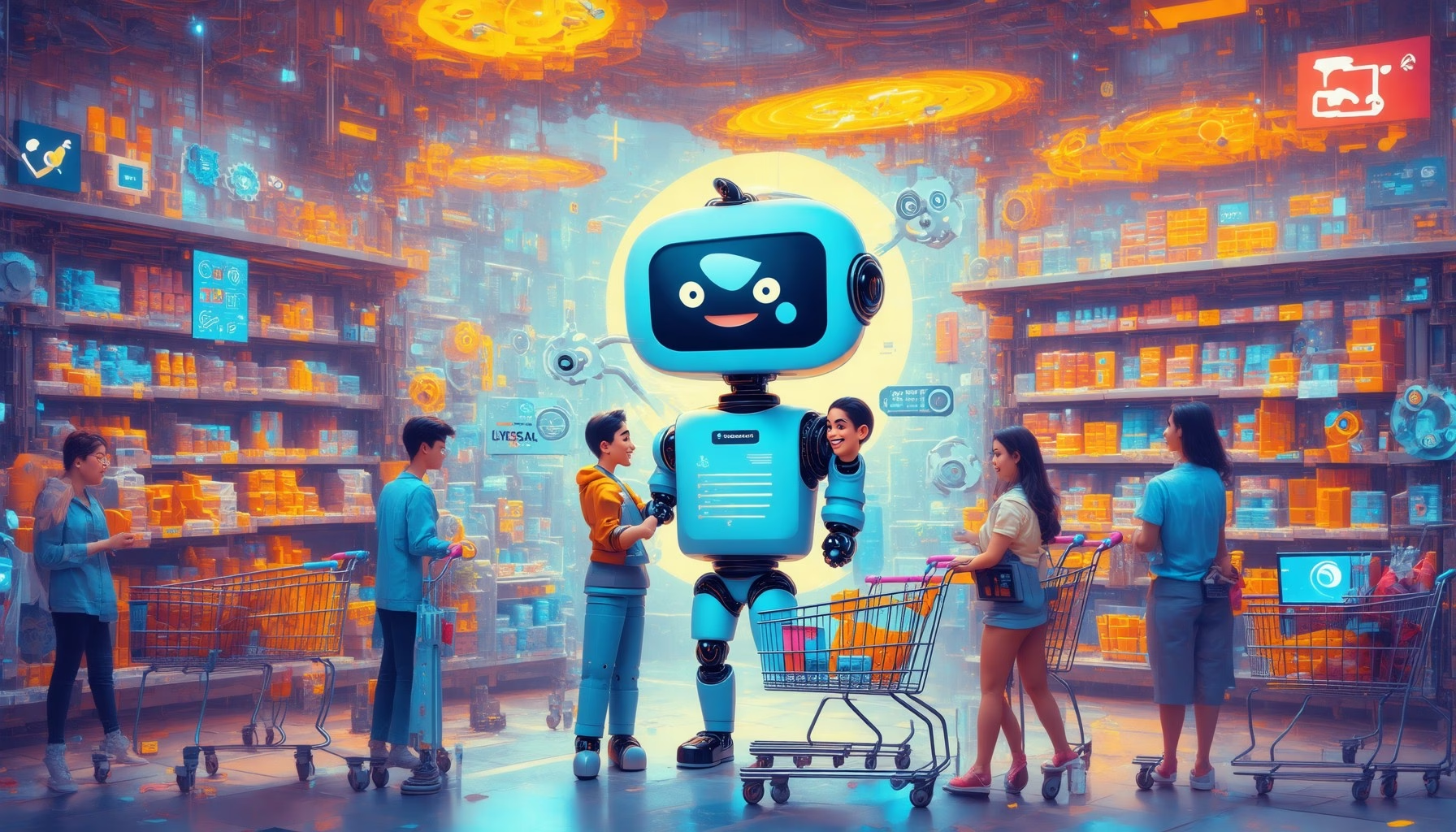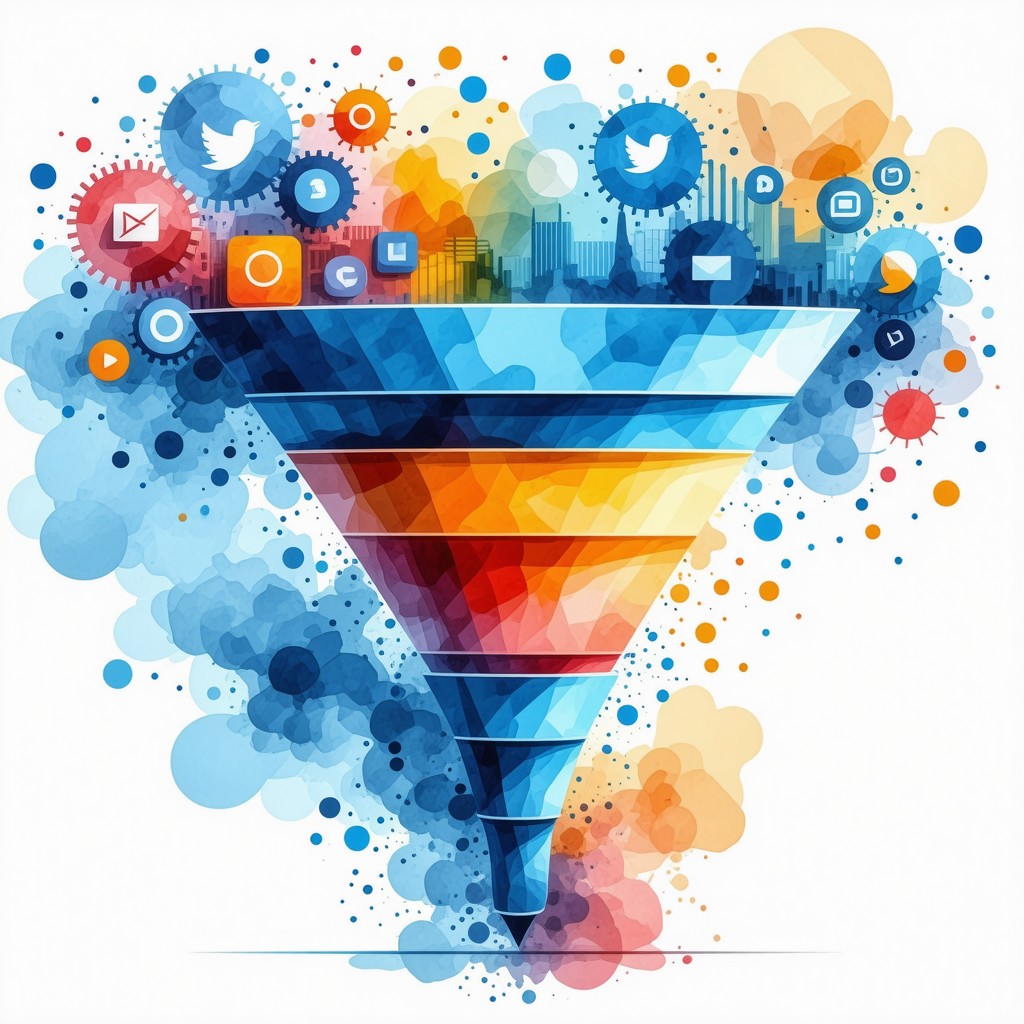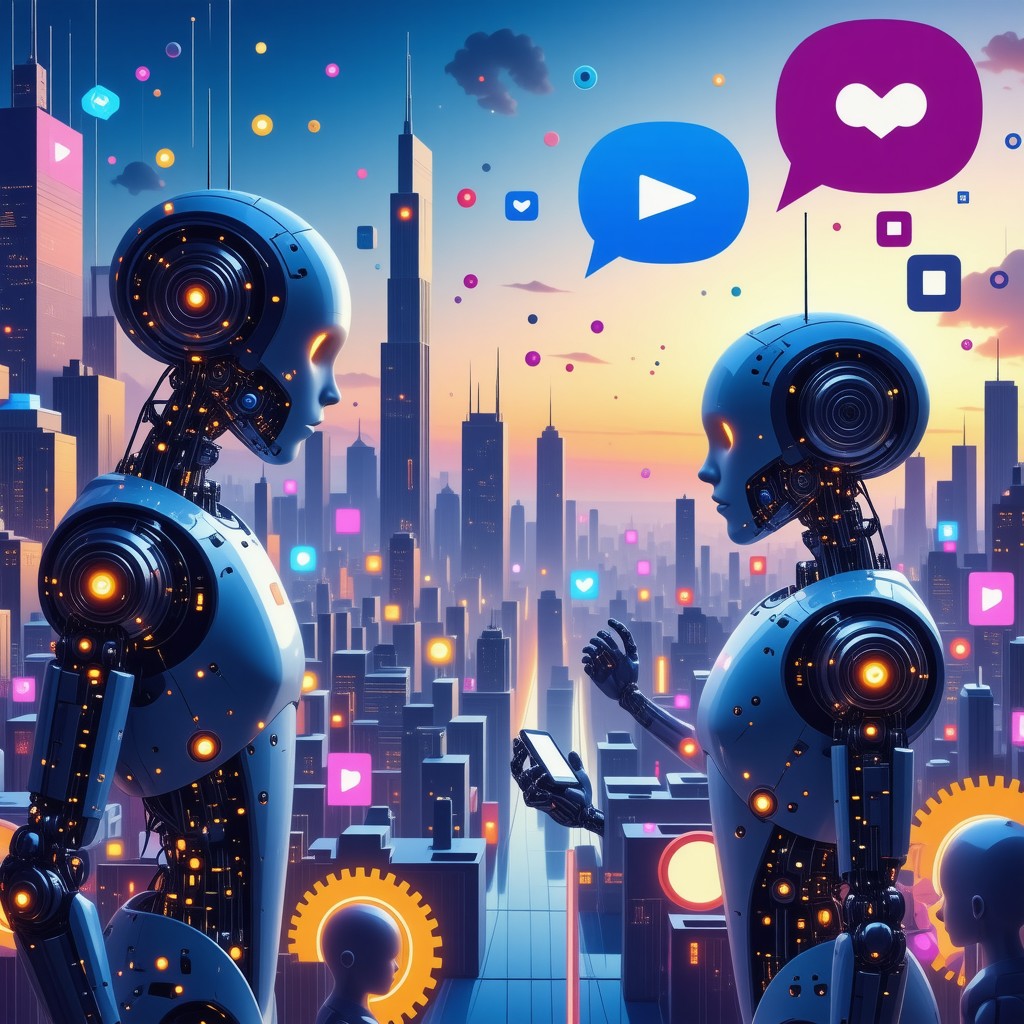Key Takeaways
- Boost Customer Engagement: Facebook Messenger bots enhance real-time communication, leading to improved customer satisfaction and loyalty.
- Streamlined Setup Process: Follow six straightforward steps to create a Facebook Messenger bot that meets your ecommerce needs.
- 24/7 Availability: Bots operate around the clock, ensuring customer queries are addressed anytime, boosting sales opportunities.
- Personalized Interactions: AI-driven bots provide tailored responses based on user data, enhancing user experience and increasing conversion rates.
- Cost-Effective Solution: Automating responses reduces the need for extensive customer service teams, leading to significant cost savings.
- Multiple Monetization Strategies: Utilize affiliate marketing, lead generation, and direct sales within Messenger to maximize revenue from your bot.
- Access to Free Tools: Leverage free platforms like Chatfuel and ManyChat to set up your Messenger bot without coding knowledge.
Welcome to the ultimate guide on Facebook Messenger bot ecommerce, where we delve into the transformative power of chatbots in the online retail landscape. As businesses increasingly turn to automation to enhance customer engagement, understanding how to effectively set up and utilize a Facebook Messenger bot becomes essential. In this article, we will explore the step-by-step process of creating your own bot, the key features that make these bots indispensable for ecommerce, and the various ways they can drive sales and streamline operations. Additionally, we will address common queries such as how to identify bot behavior, the costs associated with Facebook Messenger bot pricing, and successful monetization strategies that can turn your bot into a revenue-generating machine. Whether you’re looking for Facebook Messenger bot ecommerce GitHub resources or templates to kickstart your journey, this comprehensive guide will equip you with the insights and tools needed to master the art of Facebook Messenger bot ecommerce. Get ready to unlock the full potential of your business with automation and innovative strategies!
How to set up a Facebook Messenger bot?
Steps to Create Your Facebook Messenger Bot
Setting up a Facebook Messenger bot can significantly enhance your customer engagement and streamline communication. Here’s how to set up a Facebook Messenger bot in 6 comprehensive steps:
- Familiarize yourself with the Facebook Messenger bot builder interface. Begin by accessing the Facebook for Developers website and navigating to the Messenger platform. Understanding the layout and available features is crucial for effective bot creation.
- Add a welcome message and configure a fallback option. The welcome message is the first interaction users will have with your bot, so make it engaging and informative. The fallback option ensures that if the bot cannot understand a user’s input, it provides a helpful response or directs them to human support.
- Create menu options for users to select. Implementing a structured menu helps guide users through their interactions with the bot. Use clear and concise labels for each menu item to enhance user experience and engagement.
- Link responses to actions. Each user input should trigger specific actions or responses. Utilize Facebook’s built-in tools to set up automated replies, quick replies, and buttons that lead to further interactions or external links, enhancing the bot’s functionality.
- Create an exit path for the chat interaction. It’s important to provide users with a clear way to end the conversation or return to the main menu. This can be achieved by including a “Main Menu” button or a “Goodbye” message that reassures users their needs have been addressed.
- Test your Messenger bot thoroughly. Before launching, conduct extensive testing to ensure all features work as intended. Gather feedback from users to identify areas for improvement and make necessary adjustments.
For further reading on best practices for building effective Messenger bots, refer to the Messenger Bot tutorials and resources from industry experts like HubSpot.
Essential Tools for Facebook Messenger Bot Setup
To create a successful Facebook Messenger bot, leveraging the right tools is essential. Here are some of the most effective tools for setting up your Facebook Messenger bot:
- Facebook Messenger Platform: The primary interface for building and managing your bot, offering various features and integrations.
- Chatbot Builders: Platforms like Shopify and Zendesk provide user-friendly interfaces for creating and customizing your bot without extensive coding knowledge.
- Analytics Tools: Utilize tools to track user interactions and engagement metrics, helping you refine your bot’s performance over time.
- Integration Services: Services like Brain Pod AI offer advanced AI capabilities to enhance your bot’s functionality, including multilingual support and automated responses.
By utilizing these tools, you can effectively set up a Facebook Messenger bot that meets your business needs and enhances customer interactions.
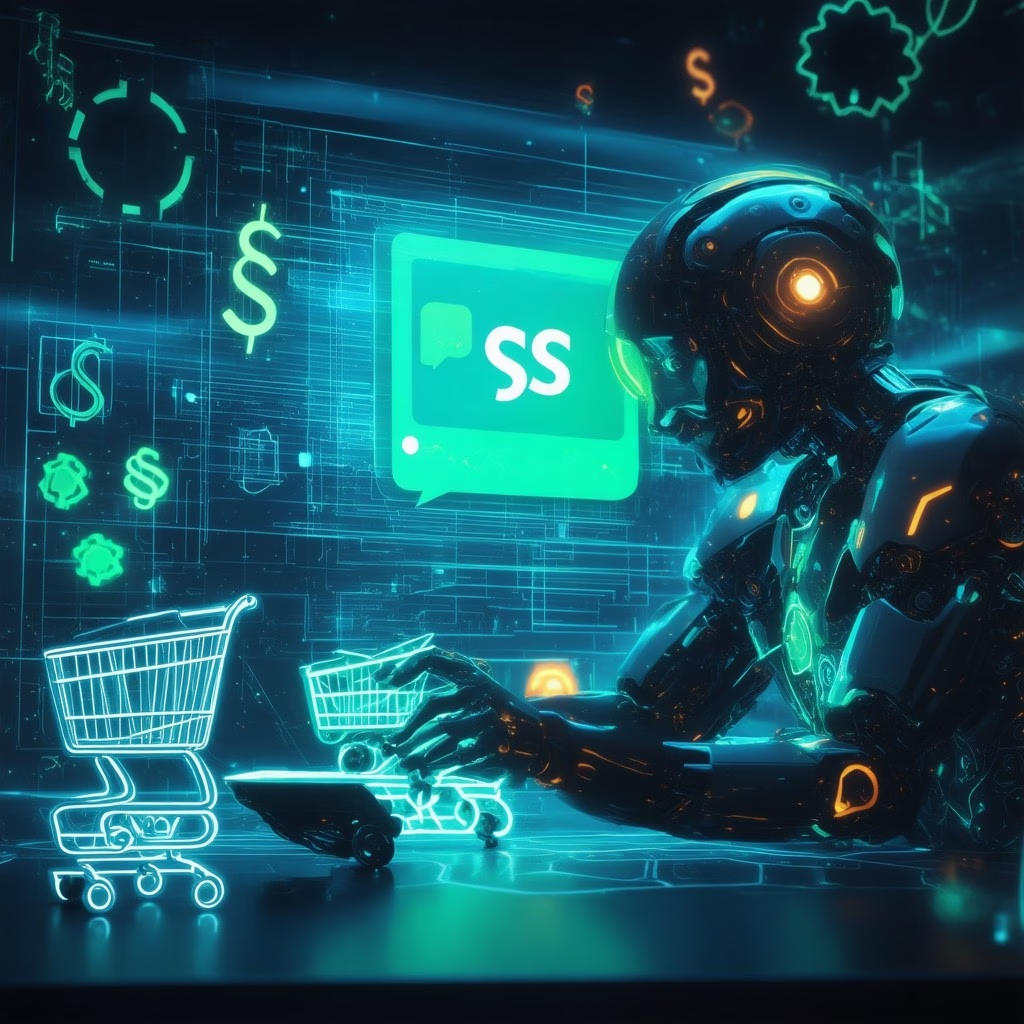
What are Facebook Messenger bots?
A Facebook Messenger bot is an advanced automated messaging tool designed to facilitate communication within the Messenger app. These bots leverage artificial intelligence (AI) and natural language processing (NLP) to engage users in real-time conversations, providing instant responses to inquiries and enhancing customer interaction.
Understanding the Functionality of Facebook Messenger Bots
Facebook Messenger bots operate 24/7, ensuring that customer queries are addressed at any time, which significantly improves user experience. They can analyze user data and preferences, allowing for tailored responses that resonate with individual users, thereby fostering stronger relationships. This scalability means businesses can handle a large volume of inquiries simultaneously without the need for additional staff, making Messenger bots a cost-effective solution for customer service.
Moreover, these bots can be integrated with various business tools and platforms, such as CRM systems, to streamline operations and enhance data management. They also assist in guiding users through the sales funnel by providing product recommendations, answering questions, and even facilitating transactions directly within the Messenger app. For more insights on how to set up your first AI chat bot, check out our tutorial.
Key Features of Facebook Messenger Bots for Ecommerce
Key features of Facebook Messenger bots include:
- 24/7 Availability: Bots ensure constant availability for customer queries.
- Personalized Interactions: AI algorithms allow for tailored responses based on user data.
- Scalability: Handle numerous inquiries simultaneously without extra staff.
- Integration Capabilities: Seamlessly integrate with business tools for enhanced operations.
- Lead Generation and Sales: Assist in guiding users through the sales funnel and facilitating transactions.
Recent studies indicate that businesses using Messenger bots can experience up to a 30% increase in customer engagement and satisfaction (source: HubSpot, 2023). Additionally, according to a report by Gartner, by 2025, 75% of customer service interactions will be powered by AI, highlighting the growing importance of these tools in modern business strategies.
For those interested in exploring Facebook Messenger bot ecommerce solutions, consider checking out our features or pricing options to find the best fit for your business needs.
How to tell if someone is a bot on Facebook Messenger?
Identifying whether someone is a bot on Facebook Messenger can enhance your interaction experience. Here are key indicators to help you discern bot behavior:
- High Activity Levels: Bots often exhibit abnormally high activity, such as sending multiple messages or comments in rapid succession. This behavior is typically inconsistent with human interaction patterns.
- Content Quality: If the messages primarily consist of links to spam websites, promotional content, or empty posts, this is a strong sign of a bot. Genuine users usually engage in meaningful conversations rather than sharing irrelevant links.
- Repetitive Responses: Bots tend to provide scripted or repetitive answers. If the interaction feels mechanical, with similar phrases or responses being used frequently, it is likely that you are communicating with a bot.
- Lack of Personalization: Bots often fail to personalize their responses. If the conversation lacks context or seems generic, it may indicate that you are dealing with an automated system rather than a real person.
- Response Time: Bots can respond almost instantaneously, while human users typically take longer to reply. If you notice immediate responses to complex questions, it could be a bot at work.
- Engagement Style: Bots may not engage in nuanced discussions or follow conversational cues effectively. If the responses do not align with the flow of the conversation, this could suggest bot behavior.
For further insights, you can refer to studies on bot detection and online behavior analysis from sources like the Pew Research Center and academic journals on digital communication. Understanding these characteristics can help you navigate interactions on platforms like Facebook Messenger more effectively.
Differences Between Human Users and Bots on Messenger
Recognizing the differences between human users and bots on Facebook Messenger is crucial for effective communication. Here are some distinctions:
- Conversational Depth: Human users typically engage in deeper, more varied conversations, while bots often stick to scripted responses that lack depth.
- Emotional Engagement: Humans express emotions and empathy, whereas bots may struggle to convey genuine feelings, often resulting in robotic or flat responses.
- Contextual Awareness: Humans can understand context and nuances in conversations, while bots may misinterpret or fail to grasp subtleties, leading to irrelevant replies.
- Adaptability: Human users can adapt their communication style based on the conversation flow, while bots are limited to pre-programmed responses and may not adjust effectively.
- Personal Touch: Humans often personalize their messages with names or references to past interactions, whereas bots typically provide generic responses without personalization.
By understanding these differences, you can enhance your interactions on Facebook Messenger and identify when you are engaging with a bot versus a real person.
How can businesses use Facebook Messenger bots automations in marketing?
Businesses can effectively utilize Facebook Messenger bot automations in marketing through the following strategies:
- Enhancing Customer Engagement: Messenger bots facilitate real-time communication, allowing businesses to engage with customers instantly. This immediate interaction can lead to higher customer satisfaction and loyalty.
- Lead Generation: By integrating chatbots into marketing campaigns, businesses can capture potential leads through interactive conversations. Bots can ask qualifying questions and gather contact information, streamlining the lead generation process.
- Personalized Marketing: Messenger bots can analyze user data to deliver personalized content and recommendations. This tailored approach increases the likelihood of conversions, as customers receive relevant offers based on their preferences.
- Automating Customer Support: Bots can handle frequently asked questions and provide instant responses, reducing the workload on human agents. This automation ensures that customers receive timely assistance, enhancing their overall experience.
- Re-engagement Campaigns: Messenger bots can be programmed to send follow-up messages to customers who have previously interacted with the brand. This re-engagement strategy can help bring customers back to complete purchases or explore new products.
- Facilitating Transactions: Businesses can enable shopping directly within Messenger, allowing customers to browse products, receive recommendations, and complete purchases without leaving the chat interface. This seamless experience can significantly boost sales.
- Collecting Feedback: Bots can solicit customer feedback through surveys and polls, providing valuable insights into customer satisfaction and areas for improvement. This data can inform future marketing strategies.
According to a study by HubSpot, 47% of consumers are open to purchasing items through a chatbot, highlighting the potential of Messenger bots in driving sales. Additionally, a report from Gartner predicts that by 2025, 75% of customer service interactions will be powered by AI, emphasizing the growing importance of chatbots in business operations. By leveraging these capabilities, businesses can enhance their marketing efforts and achieve better results.
Leveraging Facebook Messenger Bots for Marketing Automation
Marketing automation through Facebook Messenger bots can significantly streamline business operations. Here are some key benefits:
- 24/7 Availability: Messenger bots operate round the clock, ensuring that customer inquiries are addressed at any time, which can lead to increased sales opportunities.
- Cost Efficiency: Automating responses reduces the need for a large customer service team, allowing businesses to allocate resources more effectively.
- Data-Driven Insights: Messenger bots collect valuable data on customer interactions, enabling businesses to refine their marketing strategies based on real-time feedback.
Integrating a Facebook Page Messenger chatbot can enhance your marketing automation efforts, providing a seamless experience for customers and driving engagement.
Successful Marketing Strategies Using Facebook Messenger Bots
To maximize the effectiveness of Facebook Messenger bots in marketing, consider these successful strategies:
- Interactive Quizzes and Polls: Engage users with fun quizzes that can lead to personalized product recommendations, enhancing the shopping experience.
- Exclusive Offers and Discounts: Use Messenger bots to deliver exclusive promotions directly to users, incentivizing them to make purchases.
- Content Distribution: Share valuable content such as blog posts or videos through Messenger, keeping your audience informed and engaged.
By implementing these strategies, businesses can effectively utilize Facebook Messenger bots to enhance their marketing efforts and drive sales, making the most of this innovative technology.

How do Messenger bots make money?
Messenger bots can generate revenue through several effective strategies that leverage their automation capabilities and user engagement. Understanding these monetization strategies is crucial for businesses looking to maximize their return on investment in Facebook Messenger bot ecommerce.
Monetization Strategies for Facebook Messenger Bots
1. Affiliate Marketing: By integrating affiliate links within conversations, Messenger bots can promote products or services. When users make purchases through these links, the bot owner earns a commission. This method leverages the bot’s ability to engage users and recommend relevant products based on their interests.
2. Lead Generation: Messenger bots can efficiently capture user information, such as email addresses and phone numbers. This data can be sold to businesses seeking potential customers. By providing valuable content or incentives, bots can encourage users to share their information, thus creating a profitable lead generation funnel.
3. Subscription Services: Some businesses offer premium content or services through Messenger bots, charging users a subscription fee. This model works well for brands that provide exclusive insights, personalized advice, or ongoing support.
4. E-commerce Integration: Bots can facilitate direct sales by integrating with e-commerce platforms. Users can browse products, receive recommendations, and complete purchases directly within the Messenger interface, streamlining the shopping experience.
5. Advertising Revenue: Messenger bots can also generate income through advertising partnerships. By promoting third-party products or services within conversations, bot owners can earn revenue based on user interactions or impressions.
6. Customer Support Services: Businesses can utilize Messenger bots to provide customer support, reducing operational costs. By automating responses to common inquiries, companies can enhance customer satisfaction while saving on staffing expenses.
Case Studies: Successful Facebook Messenger Bot Ecommerce Examples
Several brands have successfully implemented Facebook Messenger bots to enhance their ecommerce strategies. For instance, brands like Shopify have integrated Messenger bots to streamline customer interactions and boost sales. These bots not only assist in product recommendations but also facilitate seamless transactions, making the shopping experience more efficient.
Another example is the use of Messenger bots in the fashion industry, where brands utilize bots to provide personalized shopping experiences. By analyzing user preferences and past purchases, these bots can suggest items that align with individual tastes, significantly increasing conversion rates.
For more detailed insights on monetizing Messenger bots, refer to sources like the HubSpot Blog and the Chatbots Magazine, which provide extensive research and case studies on effective strategies in this domain.
How much does Messenger chatbot cost?
The cost of Messenger chatbots can vary significantly based on several factors, including the platform you choose, the complexity of the bot, and the features you require. Here’s a comprehensive breakdown:
- Free Options: Many platforms offer free versions of their Messenger chatbots, which typically include basic functionalities. Examples include Chatfuel and ManyChat, which allow users to create simple bots without any coding knowledge.
- Paid Plans: For more advanced features, such as analytics, integrations, and customer support, paid plans are available. Prices can range from $10 to $300 per month, depending on the provider and the level of service. For instance, platforms like MobileMonkey and Tars offer tiered pricing based on the number of users or interactions.
- Custom Development: If you require a highly customized chatbot solution, hiring a developer or agency can cost anywhere from $3,000 to $50,000 or more, depending on the complexity and functionality desired.
- Additional Costs: Keep in mind that there may be additional costs for hosting, maintenance, and updates, especially if you opt for a custom-built solution.
- Return on Investment (ROI): Investing in a Messenger chatbot can lead to significant savings and increased revenue through improved customer engagement and support. According to a study by Juniper Research, chatbots are expected to save businesses over $8 billion annually by 2022 through reduced customer service costs.
Understanding Facebook Messenger Bot Pricing Models
When considering a Facebook Messenger bot for your e-commerce business, it’s essential to understand the different pricing models available. Most platforms operate on a subscription basis, offering various tiers that cater to different business needs. Here are the common pricing models:
- Monthly Subscription: This is the most common model, where businesses pay a monthly fee for access to the bot’s features. The fee often scales with the number of users or interactions.
- Pay-as-You-Go: Some services charge based on usage, allowing businesses to pay only for the interactions their bot handles. This can be beneficial for businesses with fluctuating engagement levels.
- One-Time Payment: For custom-built bots, a one-time payment may be required for development, followed by ongoing maintenance fees.
For more detailed insights into pricing, consider exploring resources from industry leaders like HubSpot and Zendesk, which provide extensive research on chatbot effectiveness and cost analysis.
Free vs. Paid Facebook Messenger Bot Solutions
Choosing between free and paid Facebook Messenger bot solutions depends on your business needs and goals. Free solutions often provide basic functionalities suitable for small businesses or startups, while paid options offer advanced features that can significantly enhance user engagement and operational efficiency.
Free options like Chatfuel and ManyChat are excellent for getting started, allowing you to test the waters without financial commitment. However, as your business grows, you may find that investing in a paid solution like MobileMonkey or Tars provides the scalability and features necessary for a robust e-commerce strategy.
Ultimately, the choice between free and paid solutions should align with your business objectives, budget, and the level of customer interaction you aim to achieve through your Facebook Messenger bot.
Exploring Facebook Messenger Bot Ecommerce Solutions
As businesses increasingly turn to digital platforms for sales, the integration of Facebook Messenger bots into ecommerce strategies has become essential. These bots not only enhance customer engagement but also streamline the shopping experience, making them invaluable tools for online retailers.
Facebook Messenger Bot Ecommerce GitHub Resources
For developers and businesses looking to leverage Facebook Messenger bots for ecommerce, GitHub offers a wealth of resources. Various repositories provide code samples, templates, and frameworks that can help you build and customize your own Facebook Messenger bot. By utilizing these resources, you can create a bot tailored to your specific ecommerce needs, whether it’s for customer support, order tracking, or product recommendations.
Some notable GitHub repositories include:
- Facebook Messenger Bot Framework – A comprehensive framework for building bots.
- Ecommerce Bot Template – A ready-to-use template designed for ecommerce functionalities.
- Messenger Bot Examples – A collection of examples showcasing various bot capabilities.
These resources can significantly reduce development time and help you implement features like order management and customer engagement effectively.
Facebook Messenger Bot Ecommerce Free Tools and Templates
In addition to GitHub resources, several free tools and templates are available to help you set up your Facebook Messenger bot for ecommerce. These tools often come with user-friendly interfaces and pre-built functionalities that can be customized to fit your brand’s needs.
Some popular free tools include:
- Messenger Bot Free Trial – Test the capabilities of Messenger Bot without any initial investment.
- Chatfuel – A platform that allows you to create bots without coding, ideal for ecommerce.
- ManyChat – Offers templates specifically designed for ecommerce, enabling quick setup.
Using these free tools can help you create a Facebook page messenger chatbot that enhances customer interaction and drives sales. With the right setup, your bot can handle inquiries, provide product recommendations, and even facilitate transactions, making it a powerful asset for your ecommerce business.
